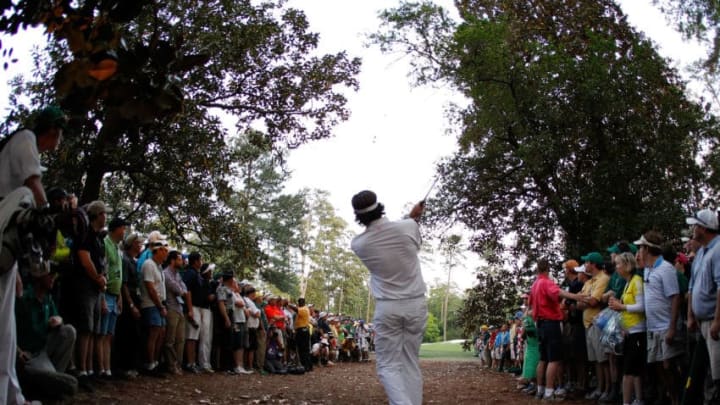
2. Gene Sarazen, 1935, 15th hole
Before Augusta National had the mystique it has now, before the tournament was even called the Masters (it was still known as the Augusta National Invitation Tournament), Gene Sarazen provided the first magical moment in only the event’s second year.
In the final round of that 1935 tournament, Sarazen trailed leader Craig Wood by three shots as he played the 15th, a 485-yard par-five. His tee shot left him 235 yards to the pin and needing a good shot to close the deficit on Wood. Sarazen didn’t hit a good shot; he hit a perfect one. His four-wood found the green and holed into the hole for a double eagle. In one swing Wood’s lead was gone. The two finished the tournament tied at six-under, and Sarazen would win a 36-hole playoff the next day by five shots.
Sportswriter Grantland Rice was the first to call Sarazen’s double eagle “the shot heard round the world,” sixteen years before Bobby Thomson’s pennant-winning home run for the New York Giants also earned that moniker. “The most thrilling single golf shot ever played,” Rice would write.
The Masters title completed the career Grand Slam for Sarazen, the first player in golf’s modern era to do so. He continued playing the Masters until 1973 but only finished in the top-10 three more times. Only three more double eagles have been hit in the Masters, but still no one has equaled Sarazen’s feat at the 15th more than eight decades later.
